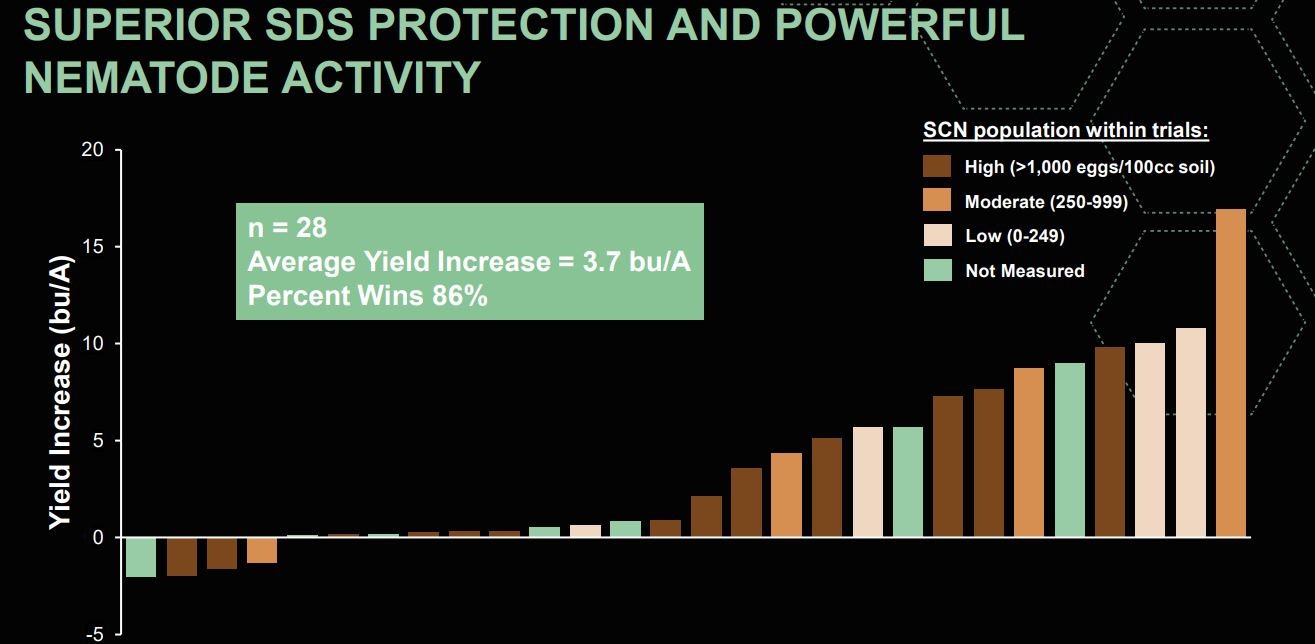Soybean Seed Treatment; Have it YOUR way
Apr 27, 2022

Soybean seed treatment should be an essential part of your soybean plan. The base program that Belgrade Co-op offers is Warden CX. In eight years of university trials, it is shown to increase yield by an average of 2.5 bushel/acre despite weather conditions. This product is the best fungicide/insecticide seed treatment on the market. It contains four active ingredients. Three of these are fungicides, which is important because there are many diseases in the soil attempting to cripple or kill your plant and not all fungicides work on all of the diseases. The insecticide in the Warden CX is Cruiser which does a good job protecting the seed from a wide variety of insects. Warden CX should be added to your soybeans regardless of the type of spring we are having. This is because some of the diseases thrive in cool, wet soils, but diseases like phytophthora thrive in warmer soil conditions. Meaning your plant is at some risk regardless of weather. Warden CX can be applied for just $9.50/unit and should be on every bean seed.
Saltro is another fungicide option we can use to help support our Warden CX treatment. Saltro is used to combat soybean cyst nematode and sudden death syndrome. Soybean cyst nematode is the #1 yield robbing disease of soybeans. It is in almost every field in Minnesota, and can be hard to spot if you don’t know what you are looking for. In most cases, it makes the plant less robust, as you are walking through your field you may be walking through knee high beans, and all of a sudden, the beans will be shin high only. From my experience this variability is frequently caused by soybean cyst nematode, and is certainly robbing yield. In testing, Saltro has been proven to help combat this problem. On average it yields 3.7 bushel over straight fungicide/insecticide treatment. View the picture below to see some testing on cyst nematode control at various nematode populations. The highest population they have in these tests is 1000, in local fields I have seen numbers as high as 40,000. This means that Saltro would have a huge effect in those fields. Apply Saltro for $12/acre on fields that have known cyst pressure. If you don’t know if you have cysts, a simple soil test will tell you one way or the other, most fields in the area have some level of cyst infestation at this point.
Preside Ultra rhizobium inoculant is another option. Rhizobia are the bacteria that form a positive relationship with the soybean root to provide nitrogen fixation for the soybean plant. This is extremely important since soybeans require five pounds of nitrogen per bushel. Even though rhizobia are naturally occurring in our soil, it is important to use an inoculant because many soil conditions could cause the population of rhizobia to be low in the soil. These factors include low pH, high pH, low organic matter, saturated soils etc. All of these factors can decrease the number of rhizobia in the soil as much as having soybeans in the rotation frequently. This is why it is important to use the inoculant in most situations. It can be added for $4.50/unit.
If white mold is a concern, we have a white mold protection system that can be applied at seed treatment as well. This product has been proven to give the plant systemically acquired resistance to white mold by creating a very healthy early season environment for the plant. This is done through plant hormones and a nutritional pack for the soybean plant. This can be added for $6.30/unit.
IN REVIEW: Warden CX - $9.50/acre BASE TREATMENT
Saltro is another fungicide option we can use to help support our Warden CX treatment. Saltro is used to combat soybean cyst nematode and sudden death syndrome. Soybean cyst nematode is the #1 yield robbing disease of soybeans. It is in almost every field in Minnesota, and can be hard to spot if you don’t know what you are looking for. In most cases, it makes the plant less robust, as you are walking through your field you may be walking through knee high beans, and all of a sudden, the beans will be shin high only. From my experience this variability is frequently caused by soybean cyst nematode, and is certainly robbing yield. In testing, Saltro has been proven to help combat this problem. On average it yields 3.7 bushel over straight fungicide/insecticide treatment. View the picture below to see some testing on cyst nematode control at various nematode populations. The highest population they have in these tests is 1000, in local fields I have seen numbers as high as 40,000. This means that Saltro would have a huge effect in those fields. Apply Saltro for $12/acre on fields that have known cyst pressure. If you don’t know if you have cysts, a simple soil test will tell you one way or the other, most fields in the area have some level of cyst infestation at this point.
Preside Ultra rhizobium inoculant is another option. Rhizobia are the bacteria that form a positive relationship with the soybean root to provide nitrogen fixation for the soybean plant. This is extremely important since soybeans require five pounds of nitrogen per bushel. Even though rhizobia are naturally occurring in our soil, it is important to use an inoculant because many soil conditions could cause the population of rhizobia to be low in the soil. These factors include low pH, high pH, low organic matter, saturated soils etc. All of these factors can decrease the number of rhizobia in the soil as much as having soybeans in the rotation frequently. This is why it is important to use the inoculant in most situations. It can be added for $4.50/unit.
If white mold is a concern, we have a white mold protection system that can be applied at seed treatment as well. This product has been proven to give the plant systemically acquired resistance to white mold by creating a very healthy early season environment for the plant. This is done through plant hormones and a nutritional pack for the soybean plant. This can be added for $6.30/unit.
IN REVIEW: Warden CX - $9.50/acre BASE TREATMENT
- Saltro - $12/acre ADD ON TREATMENT for Cyst Nematode and Sudden Death Syndrome
- Preside - $4.50/acre ADD ON TREATMENT for inoculating rhizobia
- White Mold Protection System - $6.50 ADD ON TREATMENT for white mold
Jackson Gregory
Belgrade Cooperative Agronomist
